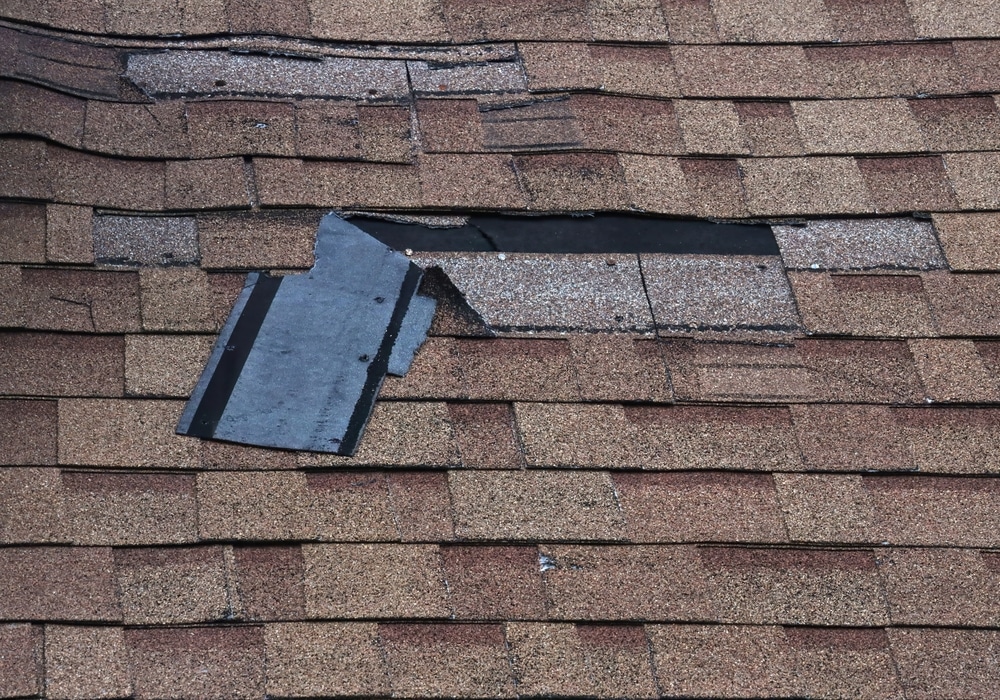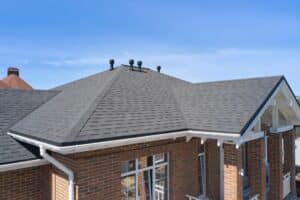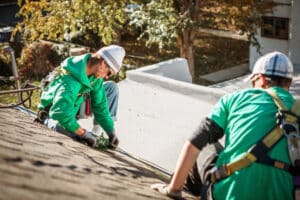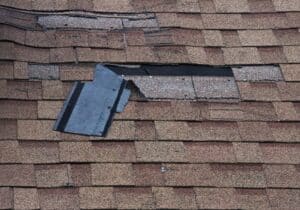When strong winds sweep through your neighborhood, your roof often takes the hardest hit. Wind damage to roof surfaces isn’t always obvious at first glance, yet ignoring small signs can lead to leaks, structural issues, and expensive repairs. This guide explains how to identify common symptoms of wind damage, when to call a professional, and steps you can take to prevent future issues.
What Is Wind Damage, and Why Does It Matter?
Wind damage in roofing occurs when high-speed gusts loosen, lift, or remove components like shingles, flashing, or gutters. Even if your roof looks intact from the ground, hidden problems may be developing underneath. If these small vulnerabilities are ignored, they can allow water to seep in, creating mold growth or structural deterioration.
Different types of wind events cause varying levels of damage:
- Straight-line winds often tear shingles away in a uniform direction.
- Gusts and microbursts can peel back sections suddenly, leaving uneven gaps.
- Tornadoes and hurricanes create widespread roof failure, especially along edges and corners.
Catching these issues early matters because the edge of the roof and ridgelines are the most vulnerable points. A professional roof inspection can confirm the extent of damage before leaks worsen.
Top Signs of Wind Damage You Can Spot Outside
You don’t always need a ladder to see the warning signs of roof wind damage. A careful walk around your property can reveal key issues.
Pro Tip: Use binoculars or a drone (if available) to inspect without climbing on the roof.
Missing Shingles
Missing shingles often expose the underlayment or roof decking.
Shingles Curling at the Edges
Wind uplift can cause shingles to curl or lift, breaking the seal that keeps water out.
Missing Granules
Check for piles of asphalt granules near downspouts or gutters. Loss of granules leaves shingles brittle and prone to leaks.
Soffit & Fascia Damage
Wind can bend or detach soffit panels and fascia boards, compromising ventilation and roofline protection.
Damaged Gutters
Look for dents, loose fasteners, or gutters pulling away from the home. Wind-blown debris can clog or break them, causing drainage problems.
What to Look for Inside Your Home
Sometimes wind damage isn’t visible from the outside. Checking your attic, ceilings, and walls can reveal subtle signs of water intrusion:
- Water stains or discoloration: Brown rings on ceilings or walls often indicate slow leaks.
- Dripping during rain: Active drips or puddles in the attic are a clear warning.
- Damp insulation: Insulation loses its effectiveness when wet and can lead to mold.
- Light peeking through roof boards: If you see daylight from the attic, wind may have loosened shingles or flashing.
- Musty odors or mold: Persistent odors are a sign of long-term moisture exposure.
These issues may not show up right away. Sometimes it takes days after a storm for leaks or staining to appear.
Expert Tip: Attic inspections are best done with a flashlight and proper safety precautions.
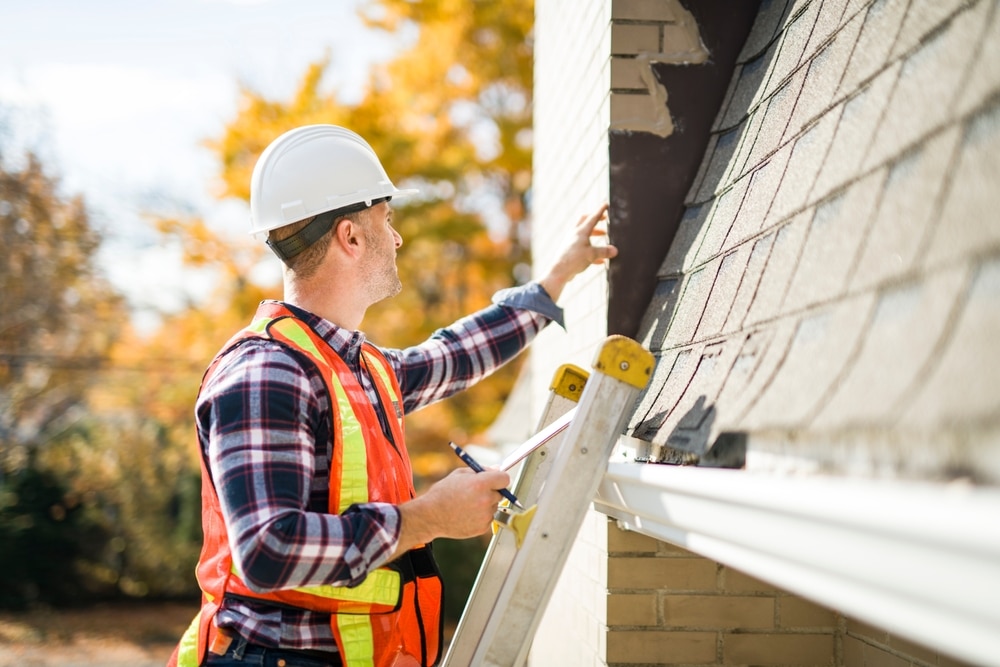
When to Call a Professional vs. DIY Checks
While homeowners can spot obvious signs from the ground or attic, some tasks are best left to the pros.
- DIY-friendly checks: Walk around your home, photograph missing shingles, and inspect ceilings for leaks.
- Professional inspections: Climbing onto a roof is risky, especially if it’s steep or damaged. Roofers have the tools and safety gear to identify hidden issues.
Most roofing contractors encourage documentation with photos and notes, but strongly advise against attempting repairs without training. A professional inspection is recommended if you suspect any damage at all.
If you’re local, Adam Vaillancourt Roofing & Gutters offers free roof inspections that will give you peace of mind after a storm.
What to Do After You Spot Wind Damage
Act quickly once you confirm or suspect damage. Delaying repairs allows water to enter and worsen the situation.
1. Document the Damage
Take clear photos from multiple angles, note the time and date, and keep records for insurance.
2. Contact a Professional Roofer
Schedule a trusted contractor to inspect and provide an estimate. Adam Vaillancourt Roofing & Gutters specializes in wind damage roof repair, ensuring problems are addressed before they escalate.
3. File a Claim with Insurance
Most policies cover roof wind damage, but insurers expect timely documentation. Provide photos, inspection reports, and receipts.
4. Schedule Your Roof Repair
Don’t postpone fixes. Even minor shingle loss can lead to widespread leaks during the next storm.
Preventing & Reducing Future Wind Damage
While you can’t control the weather, you can take steps to strengthen your roof against future storms.
- Use wind-rated shingles (Class F, D, etc.) – These shingles are tested to withstand higher wind speeds. Adam Vaillancourt Roofing & Gutters provides asphalt shingle roofing installation that meet or exceed modern wind-resistance standards.
- Trim overhanging branches – Falling limbs are a major cause of roof punctures during storms.
- Reinforce flashing and sealants – Regularly check around chimneys, vents, and skylights where wind can exploit weak spots.
- Get annual roof inspections – Professional evaluations can catch small issues before they lead to costly repairs.
Many new roofing systems are also engineered with wind mitigation in mind, giving homeowners additional protection.

The Takeaway
Wind damage to roof systems isn’t always apparent, but catching it early can save thousands in repair costs. By checking for missing shingles, attic leaks, or gutter issues, you’ll spot many warning signs before they escalate.
When in doubt, schedule a professional inspection. Services like our roof repair and roof inspection give homeowners the confidence that their home is protected.
Don’t wait for a small problem to become a major issue. Schedule your inspection today.
Frequently Asked Questions
What wind speed damages roofs?
Most roofs start experiencing damage at sustained winds of 50–60 mph, with severe damage more common above 70 mph.
Will insurance cover wind damage?
Typically, yes. Most homeowner insurance policies cover wind damage, though coverage may vary based on policy details and roof age.
Can wind damage be invisible?
Absolutely. Loose shingles, broken seals, and minor flashing movement may not be visible without a professional inspection.
How soon after a storm should I inspect the roof?
Inspect as soon as it’s safe. Delays can allow water to infiltrate, causing hidden damage and complicating insurance claims.

